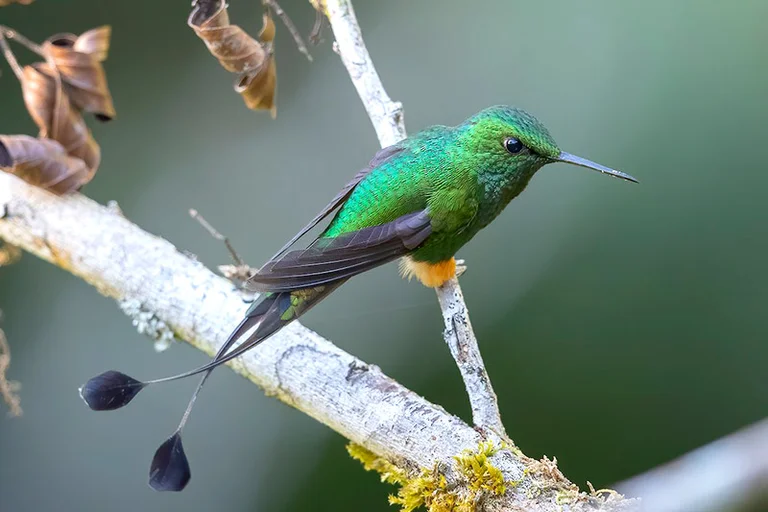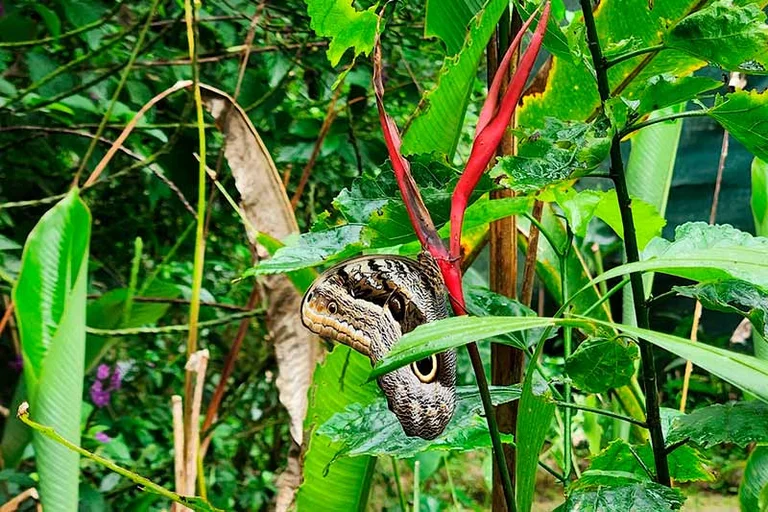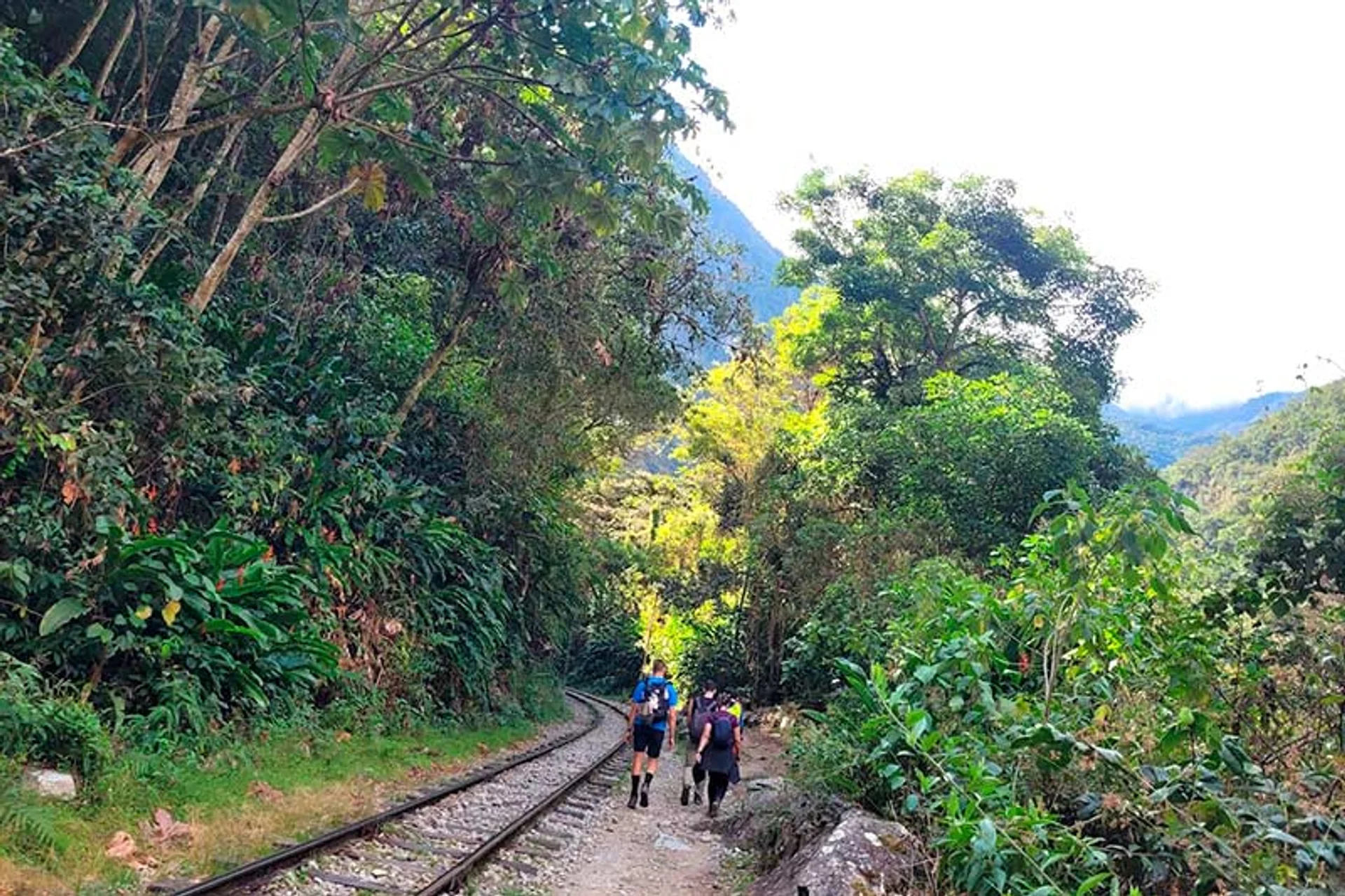Flora and Fauna on the route through Santa Teresa (Hydroelectric)
Discover the route that connects Santa Teresa (Hidroeléctrica) with Aguas Calientes. This path, in addition to offering spectacular landscapes, allows you to encounter a great variety of plants and animals. The area is a meeting point between different ecosystems, which means that along the way, you will see both the typical vegetation of humid forests and some species from tropical areas. Get ready to learn about them, understand their importance, and enjoy every detail of the landscape.

Content
- The Route of Santa Teresa
- Flora Along the Path
- Fauna Along the Route
- Ecotourism on the Santa Teresa (Hidroeléctrica) Route
- Frequently Asked Questions
The Route of Santa Teresa
The route passes through an area that blends various environments, as the region presents changes in altitude and microclimates, creating very special conditions for life. This combination of factors makes the path a natural corridor where different types of life converge, making each step of the journey offer something new and surprising. Here are some key aspects:
- Humidity: The area experiences abundant rainfall and frequent mist formation. These conditions make the vegetation very dense and diverse, creating an ideal environment for many species.
- Temperature Variations: The thermal sensation can change significantly between day and night. This shift allows for the coexistence of plants and animals that adapt to different temperatures.
- Soil: The type of soil, with its variations and valleys, creates small spaces or habitats that favor the presence of unique species in different parts of the route.
The Adventure of the Santa Teresa (Hidroeléctrica) Route
Experience the adventure of the Santa Teresa (Hidroeléctrica) route with all the magic it deserves! At Carmachupicchu, we design experiences that allow you to explore every corner of this biodiverse path until you reach the wonder of Machu Picchu. You will see everything from cloud forests inhabited by Andean cocks-of-the-rock to hidden spots where the spectacled bear rests. With expert guides, responsible itineraries, and everything organized so you only have to worry about enjoying your trip. Don’t miss the opportunity and book now to secure your spot on this unique journey. The road to Machu Picchu is full of life, and we want you to be part of it!
Flora Along the Path

The variety of plants you will see along the path from Santa Teresa to Machu Picchu is the result of the combination of different environmental conditions, making each section of the journey have its own natural charm.
- Humid Forest Trees: These trees help maintain the humid environment by providing shade and shelter to many other plants and animals. Their presence is essential for forming an understory rich in life.
- Epiphytes, Orchids, and Bromeliads: Orchids and bromeliads are very common in the area. These plants grow on tree bark and feed without harming them. Orchids, in particular, require specific light and humidity conditions, making them an indicator of good environmental quality.
- Herbaceous Plants: Besides the plants growing on trees, the lower part of the forest is full of herbaceous plants that help keep the soil healthy and support the growth of insects and other small animals.
- Mountain Cedar: This is a tall tree with feathery leaves. If you spot it, look at its branches—they are often covered with moss and small plants. It is endangered due to logging, so finding one is a privilege. Its wood was widely used in the past, but today it is protected to prevent its disappearance.
- Dragon’s Blood: This shrub is famous for its red sap, which locals use as a natural remedy to heal wounds. It grows near rivers and helps prevent soil erosion during the rainy season.
- Orchid of the Cock-of-the-Rock: Don’t confuse this plant with the bird of the same name. This orchid has flowers that resemble tiny shoes and grows in rocky areas. It blooms between November and April, attracting bees that pollinate other forest plants.
- Tank Bromeliads: These bromeliads look like green pineapples attached to trees. Rainwater accumulates in their leaves, forming small pools where insects and even tadpoles live.
- Tree-Like Ferns: These ferns are impressive—some reach up to 10 meters tall. Their wide leaves and large trunks give the forest a prehistoric look.
Fauna Along the Route

The route from Santa Teresa to Aguas Calientes is not only known for its vegetation but also for the great diversity of animals that inhabit it. Below, we present some wildlife groups along with the most important animals you may encounter during your journey.
- Mammals: Small mammals such as rodents can be spotted along the route, helping to disperse seeds and control insect populations. Larger animals like some monkeys and, on rare occasions, felines can also be seen. Although the latter are not frequently spotted, their presence indicates that the route is part of essential natural corridors for various species’ survival.
- Birds: The journey offers the chance to admire a wide variety of birds. Among them, colorful species like hummingbirds and toucans stand out, feeding on flower nectar and helping in the pollination of many plants. Larger birds such as eagles have also been spotted, using treetops and open areas for hunting.
- Amphibians and Reptiles: In the more humid areas, various frogs and salamanders can be found. These animals are highly sensitive to environmental changes, making their presence a good indicator of the ecosystem’s health.
- Insects: Along the route, you can see butterflies, bees, and other insects that, besides pollinating plants, bring color and harmony to the area. These small creatures are vital for plant reproduction and significantly contribute to the ecosystem’s balance.
- Andean Cock-of-the-rock: This is the most iconic bird on the route. Males are bright orange, and at dawn, they often gather in groups to sing and attract females. The best places to see them are in areas where the forest is densest.
- Marvelous Spatuletail: This small hummingbird has two tail feathers that look like spatulas. It is very rare, but if you’re lucky, you might see it near Aguas Calientes. It is endangered, so every sighting is special.
- Andean Bear: The only bear species in South America lives here. It is shy, but if you pay attention, you might see claw marks on trees (made when searching for food) or its droppings, which are full of seeds from fruits like aguaymanto.
- Yellow-tailed Woolly Monkey: This thick-furred primate with a golden tail is exclusive to Peru. It lives high in the trees and is rarely seen. If you hear branches moving, look up because it might be a group passing quickly.
- Red-eyed Tree Frog: At night, this green frog with bright red eyes wakes up. It hides in large leaves and lays its eggs over water. If you take a night tour, bring a soft flashlight to avoid disturbing it.
- Andean Lancehead: This venomous snake is calm and does not attack unless it feels threatened. It helps control pests like mice, making it key to the forest’s balance. Walk carefully in rocky areas and avoid putting your hands into crevices.
Pay Attention!
If you walk along the Hydroelectric route, stay alert because you might catch a glimpse of the fascinating Andean Cock-of-the-rock, a native bird with striking orange plumage and a prominent crest. Don’t miss the opportunity to witness it! Take advantage of every moment to connect with nature and remember the importance of preserving these unique living treasures’ habitats.
Ecotourism on the Santa Teresa Route (Hydroelectric)

The ecological route connecting the Hydroelectric with Machu Picchu allows visitors to closely observe different types of ecosystems. This connection is crucial for understanding how species interact and how regional biodiversity can be protected.
The path provides practical information about the area’s biodiversity, allowing travelers to learn about the species that inhabit the trail and the importance of maintaining the natural route. Visitors can discover details about the flora and fauna, contributing to greater environmental awareness and the adoption of sustainable practices during their visit.
The route is suitable for those seeking a responsible ecotourism experience. Additionally, the route helps strengthen the local economy by involving communities in commercial, tourism, and conservation activities.
